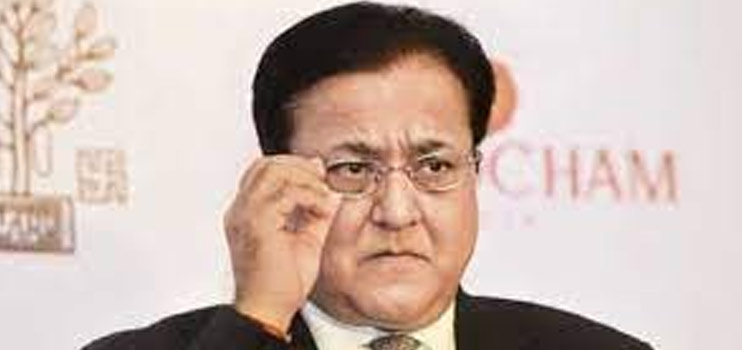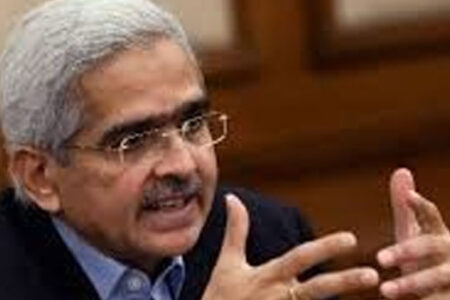I am a Rana – a warrior, always ready to battle my way to victory.
That was Rana Kapoor’s attitude and persona from his formative years at Bank of America. He joined the bank as a management trainee in 1980. After completing his MBA from Rutgers, the State University of New Jersey, commonly referred to as Rutgers University, Kapoor applied to three banks – Citibank NA, ANZ Grindlays and BankAm.
He was among the three candidates shortlisted by ANZ Grindlays. It is said he could not get the job as the other two were sons of senior bureaucrats. It may or may not be true as Kapoor was also well-connected. His father, an Indian Airlines pilot for 37 years, was a mentor pilot to the young Rajiv Gandhi, and a close associate of Congress leader, Satish Sharma.
His BankAm colleagues recall how Kapoor would come up the winner from all sorts of adverse situations. He rose to head the corporate banking business at BankAm in 16 years, reporting to country head Vikram Talwar. He was eventually forced to resign by Ambi Venkateswaran, who replaced Talwar. The reason? The banking community says he had not followed norms when sanctioning a huge credit-line to one of India’s largest corporate houses.
The two-year run that followed at ANZ Grindlays Investment Bank, as general manager and country head of corporate finance, was phenomenal. By 1998, Kapoor had raised funds for Jet Airways’ fleet acquisition and Airtel’s rollout of cellular services in Delhi. Airtel’s promoter, Sunil Mittal, was an old friend. They used to play snooker at Panchsheel Club, South Delhi, when they were both in their teens.
Kapoor’s brother-in-law Ashok Kapur was the first Asian to be appointed ABN Amro’s country manager for India. Kapoor and Kapur teamed up with Harkirat Singh, the Deutsche Bank India boss, to set up Rabo India, a non-banking financial company (NBFC). The parent was Rabobank, a Dutch multinational banking and financial services company, headquartered in Utrecht, the Netherlands.
Harkirat Singh’s Idea
It is not that well-publicised that the NBFC was Singh’s idea. He had first approached Kapur who, in turn, brought Kapoor on board. When a Rabobank team arrived in India in February 1995, scouting for opportunities, Singh proposed a joint venture to the visiting team. Since it would take time to get the banking licence from the RBI, another joint venture was planned for an NBFC, until such time as the bank licence was issued.
The NBFC was set up in February 1998. According to media reports, each of the three chipped in with equity capital of `9 crore and collectively held 25 per cent stake, but this could not be confirmed. Media reports also indicate Kapoor contributed `40 lakh for his stake, with the rest being a joining bonus from Rabobank.
Kapoor, Kapur and Hans Hannaart and Anton Nillesen (both on deputation from Rabobank), formed the management team of Rabo India Finance Ltd while Singh was made a special adviser to the managing board of Rabobank International in London, supervising projects on capital and risk management and international strategy. His role later changed, from general manager, UK operations, to co-head of the global capital markets business.
In India, Kapoor looked after financial services such as trade and commodity finance, corporate banking and advisory services. Kapur, a director, along with a Rabobank executive, were driving other parts of the business.
In no time, Rabo India turned into the best boutique investment bank in India. And, Rabobank started eating out of Kapoor’s hand after he engineered Tata Tea’s takeover of Tetley in 2000, which was the biggest cross-border acquisition made until then.
Birth of Yes Bank
In 2002, Yes Bank Ltd, a greenfield project, and another NBFC, Kotak Mahindra Finance Ltd, got the RBI nod to set up a bank each. The initial capital required for a new bank was `200 crore. The trio sold their stakes in the NBFC to generate the seed funding.
The three of them were to hold 17 per cent each in the bank. Rabobank looked at several options of holding between 20 per cent and 49 per cent. Finally, it settled for 26 per cent, which gave Rabobank the power to veto any special resolution. That made up 77 per cent equity. The plan was to offer around 5 per cent of the residual 23 per cent to the employees, and the rest would be raised from a set of private equity investors.
Yes Bank’s launch was even more dramatic than its near-collapse in 2020. According to the original plan, Singh was to be the CEO of the bank; Kapur, the non-executive chairman; and Kapoor would play a dual role as a non-executive director of the bank as well as CEO of the NBFC.
But Singh withdrew from the venture, following serious differences of opinion with his two partners. An April 2003 Economic Times report quoted Singh saying, ‘There is no longer a complete alignment with the vision, going forward.’
Singh’s exit was triggered by Rabobank’s proposal to appoint Kapur (who was by then, an executive vice president and regional manager with ABN Amro, Singapore) executive chairman.
Singh was not consulted on the proposal, the report says. ‘This decision is further evidence of a lack of mutuality of the objectives of the bank as envisioned by me. I have therefore decided to withdraw as a promoter of this new banking company… I value my reputation above everything else,’ Singh said to the paper.
Singh also found the profile of the bank’s proposed business very different from what he had envisaged. That also contributed to his decision to exit.
Kapoor seized this opportunity with both hands. He flew to Utrecht and met senior executives of Rabo, convincing them to stay put after Singh’s exit, and thus, bagged the top job. Two Rabobank personnel – Hans ten Cate, chairman of the managing board of Rabobank International, and Wouter Kolff, vice chairman, managing board, Rabobank International – joined the Yes Bank board as directors.
Rift Wide Open
The rift emerged in the open after the RBI’s deadline for setting up the bank expired. By that time, the regulator had already given a three-month extension and the roll out was scheduled for August 2003.
Following Singh’s exit, instead of holding 17 per cent stake each, Kapoor and Kapur needed to hike their stake to 25.5 per cent each (by splitting Singh’s 17 per cent between the two). Rabobank gave them a bridge loan to arrange the additional equity but also decided to reduce its own equity contribution from 26 per cent to 20 per cent, locking this down for three years.
(In April 2010, Rabobank got the RBI nod to open its own India operations, after paring its stake in Yes Bank below 5 per cent.)
Kapoor wooed three private equity funds, which came on board. Quite a few other funds had shown interest but they walked out after Singh quit. Citicorp International Finance Corporation, ChrysCapital II, LLC and AIF Capital Inc. contributed a total of 25 per cent. ChrysCapital chipped in 10 per cent, and the other two picked up 7.5 per cent each. The remaining 4 per cent was reserved for the top management.
The bank was incorporated as a public limited company on 21 November 2003.
The RBI cleared the entry of the three private equity investors on 26 February 2004 after extending its ‘in principle’ approval yet again, for a period up to 29 February 2004 through a letter dated 29 December 2003.
Yes Bank obtained its certificate of commencement of business on 21 January 2004. By March, it could mobilise the initial minimum paid-up capital of `200 crore and, finally, on 24 May 2004, RBI granted it the licence to commence operations.
Meanwhile, Singh had filed an arbitration case in London against Rabobank for removing him as the proposed bank’s designated CEO without assigning any reason. A Times of India news report, dated 15 March 2005, says Singh won the case against Rabobank for ‘breach of contract and loss of profits’ from the International Arbitration Panel in London.
A Sideshow
There was another interesting sideshow many missed at the time.
Yes Bank had impressed the regulator with its plan for financing agriculture and allied activities. In the original business plan, Yes Bank was to mirror Rabobank with interests in agri-tech, pharma, telecom, education, green-power and financing technology solutions.
However, Kapoor turned it into a corporate bank. Of course, he had set up the Food and Agribusiness Strategic Advisory and Research group within the bank to reinforce his commitment to agriculture sector. But this division never went beyond writing a few reports. This, of course, does not prevent Yes Bank claiming the group to be India’s premier food and agribusiness knowledge unit with several prestigious advisories, and research mandates to its credentials!
Extracts from `The Pandemonium: The Great Indian Banking Tragedy’



